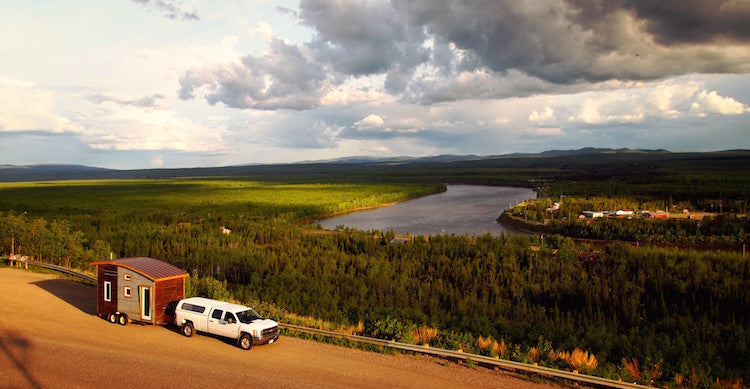Leaf House Version 3.0 – Tiny Living in Extreme Cold
Located in Whitehorse, Yukon, the Leaf House Version 3.0 stands as a pioneering example of how tiny homes can thrive in Canada’s harshest climates. Designed for temperatures that routinely reach –50 °C, this compact dwelling demonstrates how thoughtful design and ventilation in extreme cold make comfortable living possible even in the far North.
Developed by Canadian designer Laird Herbert, Leaf 3.0 pushes the limits of small-space efficiency. Every detail of the envelope is engineered for performance — the structure is exceptionally well sealed, with airtight windows and high levels of insulation to minimize heat loss and maintain stable indoor comfort. But with this level of airtightness comes a challenge familiar to many northern builders: without active ventilation, there is no natural air movement.
Balanced Ventilation in a Sealed Environment
To solve the challenge of airtightness, Leaf 3.0 integrates the Lunos e² Heat Recovery Ventilator (HRV) — one of the first uses of this technology in a North American tiny home. The system provides a constant exchange of fresh and stale air while retaining most of the home’s heat, ensuring a healthy indoor environment without compromising energy efficiency.
In a space as small and well-sealed as Leaf 3.0, balanced ventilation is essential. The Lunos system maintains consistent airflow and comfort throughout the seasons, supporting both livability and performance in extreme cold.

Living Comfort in the North
Leaf 3.0 shows that high performance and livability can go hand in hand. Field monitoring during Yukon’s deep winter confirms that the home maintains consistent warmth and air quality, even as outdoor temperatures drop well below freezing. The project serves as an early example of what’s possible when building science meets ingenuity — combining airtight construction, efficient heating, and smart ventilation to create comfort in one of Canada’s most unforgiving climates.
Cold-Weather Performance Today
Since the Leaf 3.0 project, Lunos Canada has continued to advance ventilation in extreme cold through extensive testing and product development. As a result, Lunos systems will soon be the only ductless heat-recovery ventilation systems in Canada that are fully compliant with CSA C439 and the National Building Code of Canada (NBC).
Projects like Leaf 3.0 continue to show why ventilation in extreme cold is essential for comfort and health in Canada’s northern regions. This milestone confirms what early projects like Leaf 3.0 demonstrated years ago: that balanced, decentralized ventilation can deliver reliable performance and indoor comfort even in the most severe Canadian climates.
Building for Canada’s Future
The lessons from Leaf 3.0 continue to shape how we design for comfort, health, and resilience across Canada — from modular and laneway homes to northern staff housing and remote communities.
If you’re building for cold climates and want to integrate balanced ventilation in extreme cold without ductwork, connect with Lunos Canada to learn how decentralized HRVs can meet today’s performance standards while improving indoor air quality and occupant comfort.
Explore more Lunos projects designed for Canada’s cold climates — each demonstrating how smart ventilation in extreme cold supports comfort, energy efficiency, and healthy indoor air.



0 comments